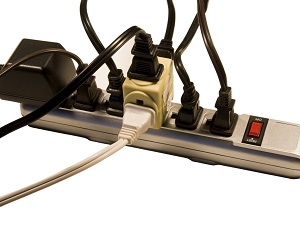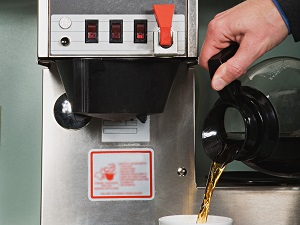Modern building design and fire codes protect most offices and stores from fire. However, there are important fire safety practices that employees and employers should follow to help prevent workplace fires, keep workers safe and keep offices and stores open.

A fire in an office, retail establishment or store can be devastating to a community. In addition to potential deaths and property loss, people may lose their jobs and the community may lose a vital service provided by the business.
Every year in the United States there are 17,000 office and store fires that cause over $800 million in direct property damage.
Remember! You do not need a flame to start a fire. Fires can start when heat builds up near flammable materials. This can happen when a hot light bulb is near things that burn, such as cloth or paper, or a faulty cord has been placed under a carpet.
OSHA Standard 1910.38(b) Written and oral emergency action plans. An emergency action plan must be in writing, kept in the workplace, and available to employees for review. However, an employer with 10 or fewer employees may communicate the plan orally to employees.
All employees should be familiar with the location of fire extinguishers, fire alarms and the closest exits to their work area. During any emergency drill, all employees should follow the evacuation procedure. No one stays behind!

Electrical hazards that can cause a fire are usually the result of faulty or defective equipment, unsafe installation, or misuse of equipment like extension cords, power strips and surge protectors. Damaged wires and cables can not only cause electric shocks but also present a fire hazard.
Regularly inspect electrical cables to ensure they are not frayed, cracked or otherwise damaged. Any electrical cables, power cords or extension cords that are damaged, or are not functioning properly, should be removed from service immediately. This includes any electrical cords that are frayed or have exposed wires, even if they still seem to be working.
OSHA Standard 1910.334(a)(2)(ii) If there is a defect or evidence of damage that might expose an employee to injury, the defective or damaged item shall be removed from service, and no employee may use it until repairs and tests necessary to render the equipment safe have been made.
Overloaded power strips and wall outlets are a common fire hazard. Do not overload wall outlets, power strips and surge protectors with too many devices. Place power strips where there is plenty of air circulation to disperse heat.
Do not use an extension cord or a power strip with portable heaters or fans, which could cause cords to overheat and result in a fire. These devices should be plugged directly into a wall outlet. Never leave portable heating devices unattended.
Be aware of fire hazards in the breakroom, in the copy room, or in other areas where larger electronics or appliances are plugged in. Leave some room behind appliances that heat up, like coffee machines and computers, to allow proper ventilation. Do not leave food unattended while using the microwave in the breakroom.
Keep all cooking appliances like coffee makers and electric kettles in kitchen or breakroom spaces only. Keep any appliance that generates heat away from items or materials which could overheat or catch fire, like napkins, papers or cloth. This could include toasters, coffee makers, electric kettles, and space heaters. Coffee makers should be equipped with auto shut-off.
Ensure that all major appliances, like refrigerators, printers, dishwashers, and microwave ovens, are plugged directly into a wall outlet, and not into an extension cord or power strip.

Practice good housekeeping. Don’t allow trash and litter to accumulate unnecessarily. Keep anything that can burn away from electrical equipment.
When replacing light bulbs, choose a bulb with the correct number of watts indicated by the sticker on the light fixture.
Hazardous and flammable materials should only be stored in designated areas.
Never block exits, remove exit signs or cover smoke detectors or sensors.
OSHA Standard 1910.176(c) Storage areas shall be kept free from accumulation of materials that constitute hazards from tripping, fire, explosion, or pest harborage.
Do not engage in horseplay with matches or a lighter. Never set fire to materials in a sink or trash can.
Only smoke in designated areas. Do not discard cigarettes or matches in vegetation like mulch, potted plants, or landscaping.

In the event of a fire, the facility and the occupants must be prepared. All employees should know what the evacuation alarms and signals sound like, so they recognize the warning. Assembly points at the exit discharge should be identified ahead of time and known by the employees. Emergency exits should be clearly labeled, lighted and visible at all times. Emergency exits should NEVER be blocked, even temporarily.
OSHA Standard 1910.37(a)(3) Exit routes must be free and unobstructed. No materials or equipment may be placed, either permanently or temporarily, within the exit route. The exit access must not go through a room that can be locked, such as a bathroom, to reach an exit or exit discharge, nor may it lead into a dead-end corridor. Stairs or a ramp must be provided where the exit route is not substantially level.
If there is a fire, or even a suspected fire:
- Call 911, pull the fire alarm, notify co-workers.
- Do not use the elevator. Walk, don’t run, down the stairs and out the nearest exit.
- Proceed directly to the assembly area or follow instructions on where to gather outside past the fire lane a safe distance from the building.


